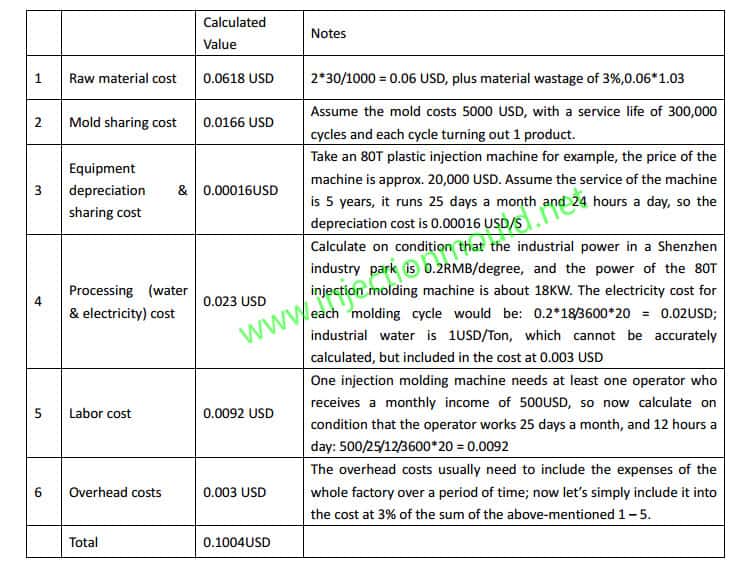The most basic costs of a plastic injection molding part mainly include:
Raw material cost, mold sharing cost, equipment depreciation & sharing cost, processing (water & electricity) cost, labor cost, site rental and other overhead costs;
Now we are going to analyze the cost structure of a plastic part with a specific example:
Assumptions:
Product: Food storage container lid;
Material: PP Copolymer;
Unit price of the material: 2USD /kg;
Weight: 30 g;
Molding cycle: 20 Seconds;
1. When considering the cost of a raw material, attention should be paid to the density of the material. For materials with the same unit price, the lower the density, the lighter the product is and the lower the cost;
2. Mold costs vary greatly. The cost of a high-quality mold and that of an average mold may differ by 5 – 10 times. The service life of a high-quality mold can reach up to 500,000 cycles, while that of an average mold is only 100,000 – 300,000 cycles.
3. Molding cycle determines the processing cost. The shorter the cycle, the lower the energy consumption and the cost are. For example, the addition of a nucleating agent can reduce the molding cycle.
4. The demographic dividend in China is gradually fading away. Due to the aging of the population, the demographic dividend in China will disappear after 2013, so the proportion of labor cost in the cost of a product will be getting higher and higher.

